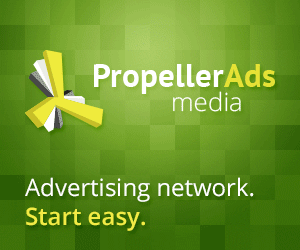Amortization Business Loan (Simple Quick Loan)
Amortization Business Loan (Simple Quick Loan)
Amortization (business)
Running a business, amortization refers to distributing payments over multiple
intervals. The term is employed for two separate processes: amortization associated with loans
and assets. It also refers to allocating the price of an intangible asset
over some time.
Amortization of loans
Within lending, amortization is the actual distribution of loan payments into
multiple cash circulation installments, as determined through an amortization schedule.
In contrast to other repayment models, each repayment instalment includes both
principal and curiosity. Amortization is chiefly utilized in loan repayments (a
common example as being a mortgage loan) and within sinking funds. Payments tend to be
divided into equal amounts throughout the loan, making this the
simplest repayment design. A greater amount from the payment is applied in order to
interest at the start of the amortization schedule, while more income is
applied to principal at the conclusion. Commonly it is referred to as EMI or Equated
Month-to-month Installment. ¹
P = A·\frac1-\left (\frac11+r \right )^n r
or even, equivalently,
A = P·\fracr(1 + r)ⁿ (1 + r)ⁿ - 1
exactly where: P is the primary amount borrowed, A may be the periodic amortization
payment, r may be the periodic interest rate split by 100 (nominal yearly
interest rate also divided by 12 in the event of monthly installments), and d is
the total quantity of payments (for a 30-year loan with monthly obligations n =
30 × 12 = 360).
Negative amortization (also known as deferred interest) occurs when the
payments made do not cover the eye due. The remaining curiosity owed is
added towards the outstanding loan balance, which makes it larger than the unique
loan amount.
If the repayment model for any loan is "fully amortized, " then your very last
payment (which, when the schedule was calculated properly, should be equal
to any or all others) pays off just about all remaining principal and interest about the loan.
If the repayment model on the loan is not completely amortized, then the final
payment due may be considered a large balloon payment of remaining principal and
curiosity. If the borrower does not have the funds or property to immediately make
which payment, or adequate credit to refinance the total amount into a new mortgage,
the borrower may find themselves in default.
Amortization (business)
Running a business, amortization refers to distributing payments over multiple
intervals. The term is employed for two separate processes: amortization associated with loans
and assets. It also refers to allocating the price of an intangible asset
over some time.
Amortization of loans
Within lending, amortization is the actual distribution of loan payments into
multiple cash circulation installments, as determined through an amortization schedule.
In contrast to other repayment models, each repayment instalment includes both
principal and curiosity. Amortization is chiefly utilized in loan repayments (a
common example as being a mortgage loan) and within sinking funds. Payments tend to be
divided into equal amounts throughout the loan, making this the
simplest repayment design. A greater amount from the payment is applied in order to
interest at the start of the amortization schedule, while more income is
applied to principal at the conclusion. Commonly it is referred to as EMI or Equated
Month-to-month Installment. ¹
P = A·\frac1-\left (\frac11+r \right )^n r
or even, equivalently,
A = P·\fracr(1 + r)ⁿ (1 + r)ⁿ - 1
exactly where: P is the primary amount borrowed, A may be the periodic amortization
payment, r may be the periodic interest rate split by 100 (nominal yearly
interest rate also divided by 12 in the event of monthly installments), and d is
the total quantity of payments (for a 30-year loan with monthly obligations n =
30 × 12 = 360).
Negative amortization (also known as deferred interest) occurs when the
payments made do not cover the eye due. The remaining curiosity owed is
added towards the outstanding loan balance, which makes it larger than the unique
loan amount.
If the repayment model for any loan is "fully amortized, " then your very last
payment (which, when the schedule was calculated properly, should be equal
to any or all others) pays off just about all remaining principal and interest about the loan.
If the repayment model on the loan is not completely amortized, then the final
payment due may be considered a large balloon payment of remaining principal and
curiosity. If the borrower does not have the funds or property to immediately make
which payment, or adequate credit to refinance the total amount into a new mortgage,
the borrower may find themselves in default.



























No comments